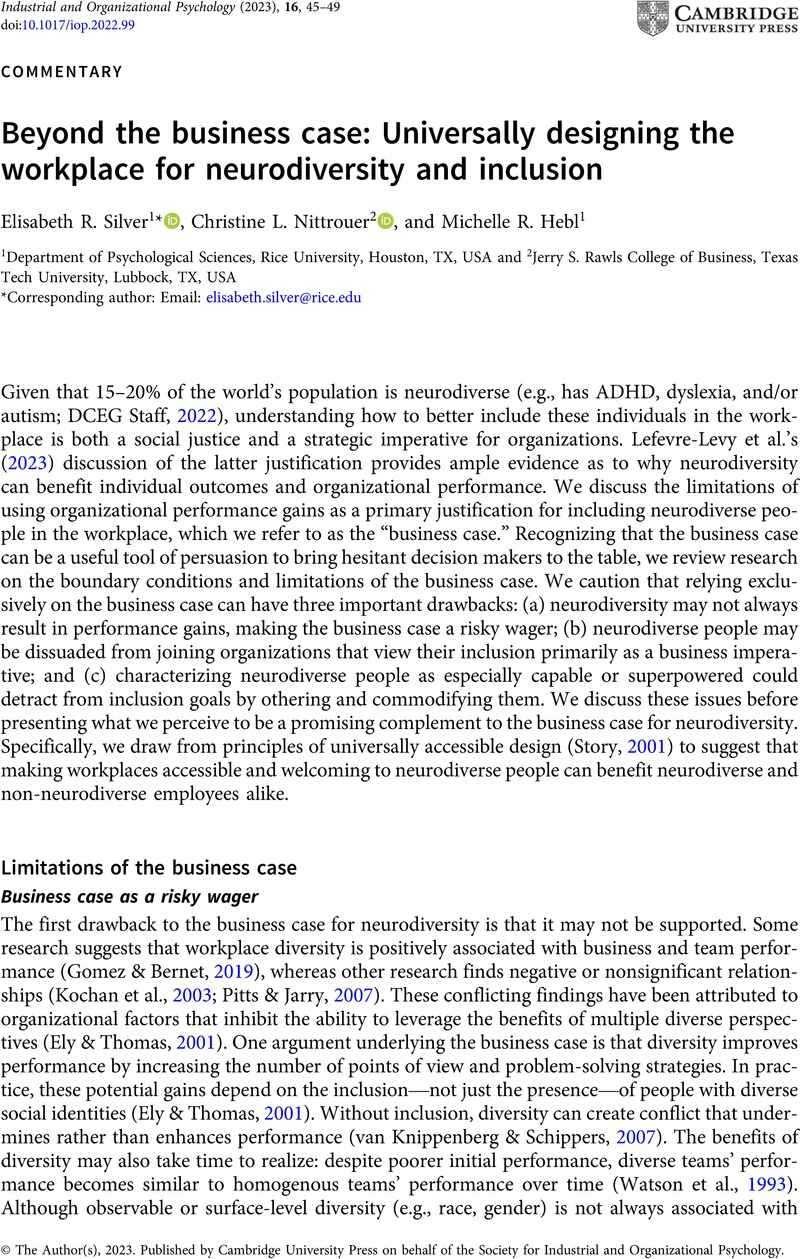Crossref Citations
This article has been cited by the following publications. This list is generated based on data provided by
Crossref.
Sanders, Karin
Fisher, Sandra L.
and
Dickmann, Michael
2023.
Understanding HRM financial value from obtaining more star performers: introduction on a paper and commentary collection.
The International Journal of Human Resource Management,
Vol. 34,
Issue. 13,
p.
2571.
Samosh, Daniel
Lilius, Jacoba
and
Atwood, Kimberley
2024.
Neurodiversity and Work.
p.
257.
Szulc, Joanna Maria
2024.
Embracing silence: Creating inclusive spaces for autistic employees.
Industrial and Organizational Psychology,
Vol. 17,
Issue. 3,
p.
357.
Dahunsi, Oluwadara
Robinson, Nicaise
Parks, Cami
and
Nittrouer, Christine
2024.
Neurodiversity and Work.
p.
207.
Tariq, Muhammad Usman
2024.
Resilience of Multicultural and Multigenerational Leadership and Workplace Experience.
p.
182.
Schuurmans, Jantje A
Wright, Elaine P
Bunders-Aelen, Joske GF
and
Regeer, Barbara J
2024.
Exploring autistic employment and retention realities: A qualitative study among 12 Dutch organizations.
Neurodiversity,
Vol. 2,
Issue. ,
Alstete, Jeffrey W.
Meyer, John P.
and
Beutell, Nicholas J.
2024.
Enhancing business education: neurodiversity informed faculty development practices.
Journal of International Education in Business,
Vol. 17,
Issue. 3,
p.
556.
Doyle, Nancy
2024.
Neurodiversity and Work.
p.
13.
Mukherjee, Ujjal
Raj, Bhavana
and
Arora, Drishti
2025.
The Future of HRM in a World of Persistent Virtual Reality.
p.
69.
Granland, Madeleine Ella
Sadia, Toar
and
Cooper, Elizabeth
2025.
Beyond the minimum: designing for neurodiversity in museums and galleries.
Archnet-IJAR: International Journal of Architectural Research,
Nittrouer, Christine L.
Arena, David
Silver, Elisabeth R.
Avery, Derek R.
and
Hebl, Mikki R.
2025.
Despite the haters: The immense promise and progress of diversity, equity, and inclusion initiatives.
Journal of Organizational Behavior,
Vol. 46,
Issue. 1,
p.
188.



